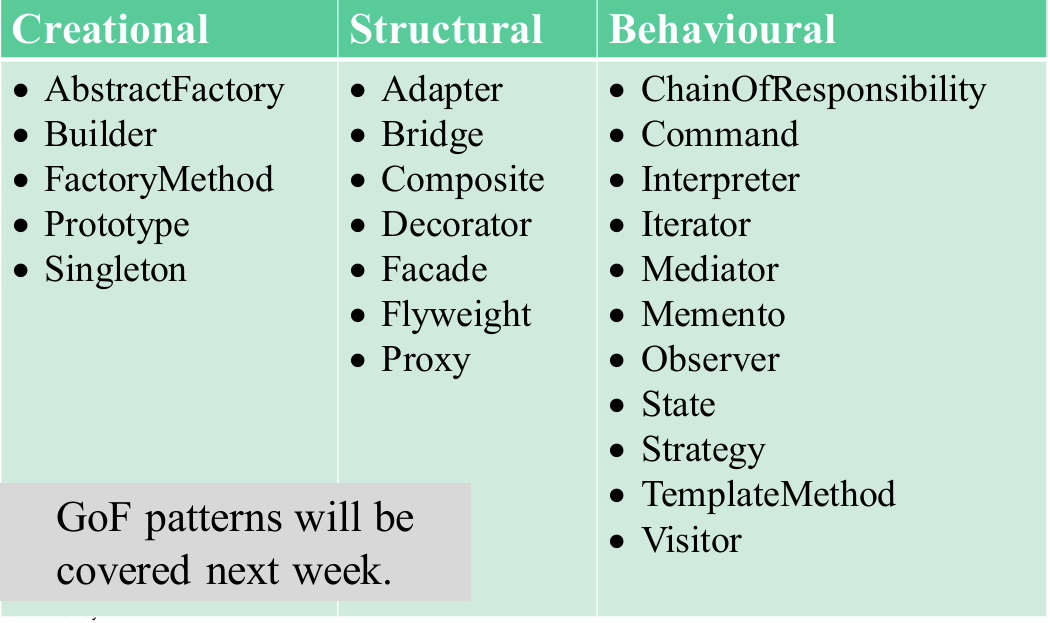OO principle
1. OO Software Design Concepts
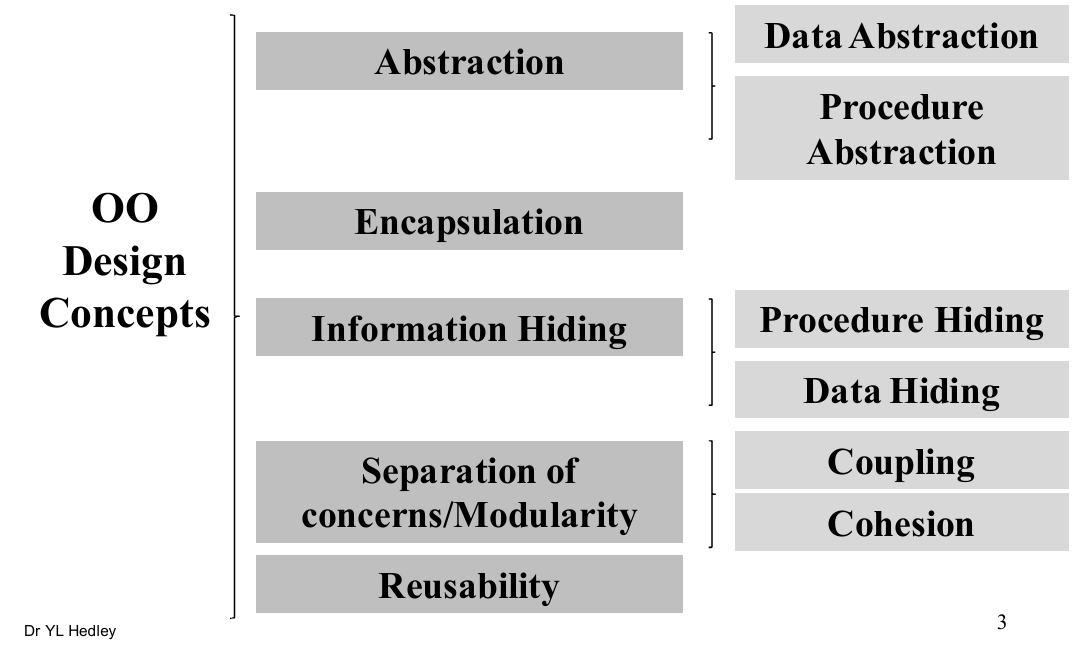
1.1 Abstraction
- Data abstraction: The developer and other objects in the system have a high level summary view (an abstract view) of what data items are. It contains the required information about an object.
- Procedure abstraction: A high level summary view of the operations provided. The details and how the methods are coded are ignored.
就是变量名称和方法名称要简单直接。比如我们想输出一个人的姓名,方法可以叫printname。
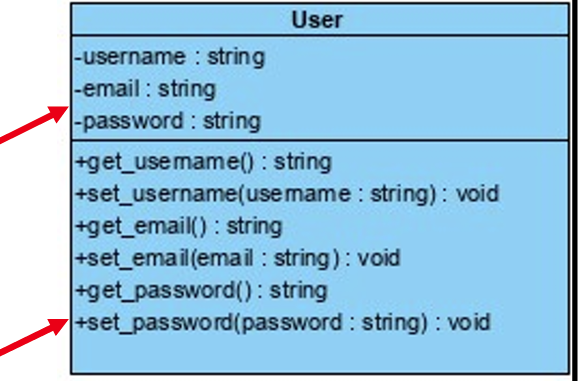
1.2 Encapsulation
1.2.1 Class/Object
The attributes (data) relating to an object and the operations that act upon them are all encapsulated inside a single software “capsule”.
变量和操作一起被封装在对象中。
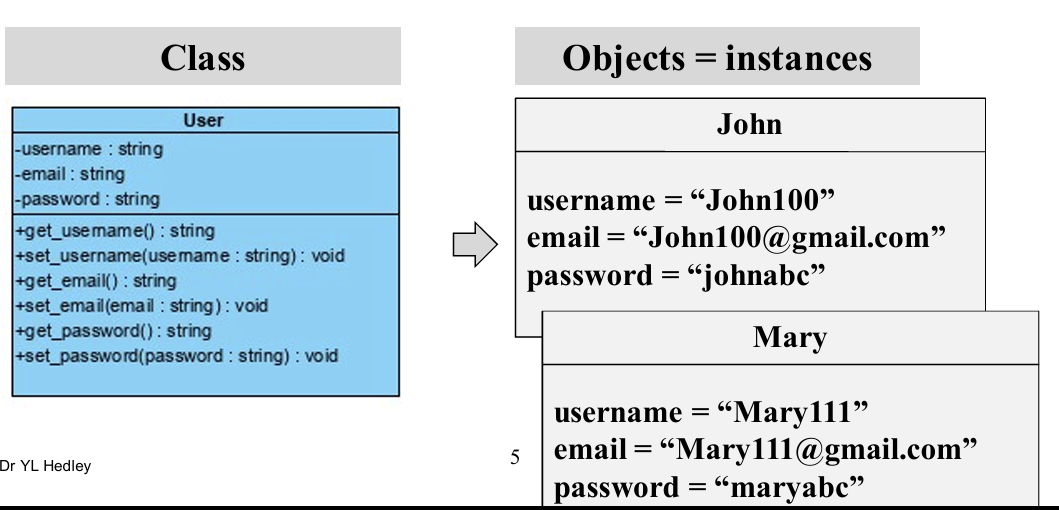
1.2.2 Aggregation/Composition
via aggregation and composition to encapsulate components.
encapsulates a group of classes collectively, as a complex whole is made of similar components (parts)
把一组类封装起来。
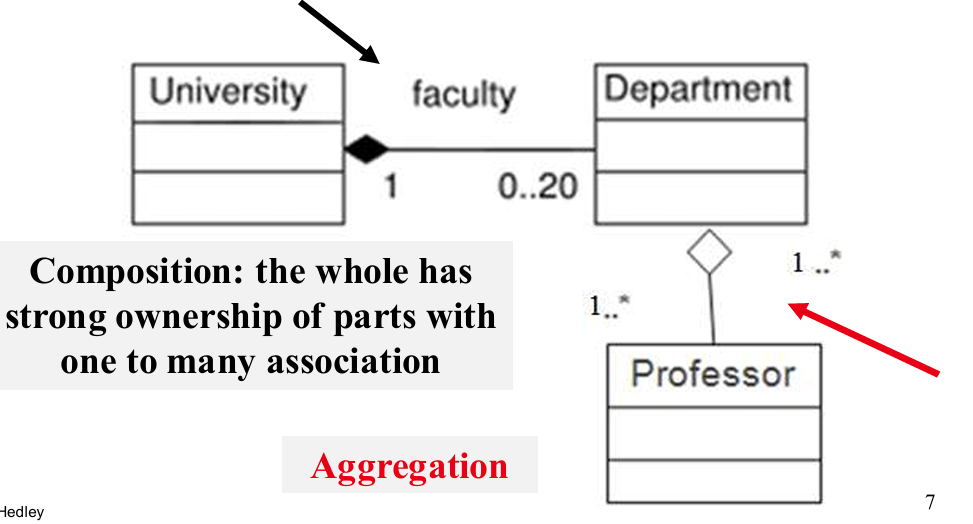
1.3 Information Hiding
- Data Hiding: the developer and other objects in the system have no direct access to the attributes (which are private) or the detail of how the attributes are stored.
- Procedure Hiding: The developer and other objects in the system do not know the detail of how the methods work. The name of a method is public, but the code body of the method is hidden. (内置函数)
The access to the data via accessor methods (e.g get methods, get_username (); modification of the data via mutator methods (e.g. set methods, set_username ()
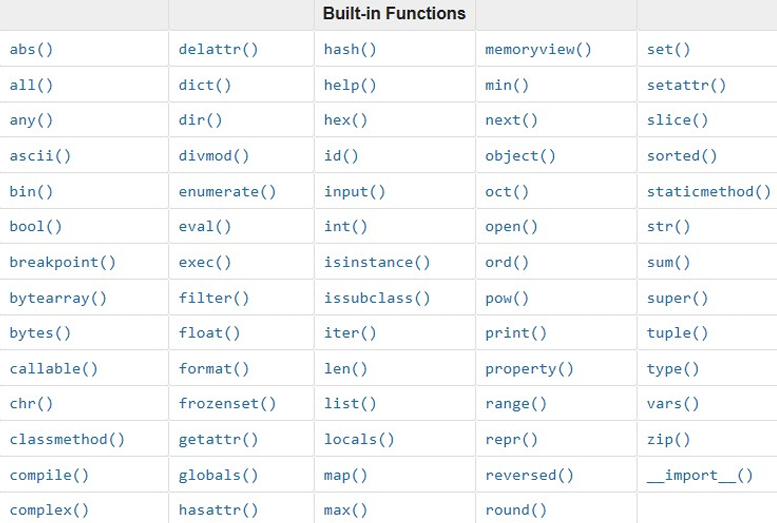
上图是Example of procedure hiding
1.4 Separation of Concerns & Modularity
Separation of Concerns − Refers to a given problem that involves different areas of concerns to be identified and separated to deal with complexity, and to achieve required engineering quality)
For example: The inputs/outputs, logic of a program are separated from data storage(whose primary concern is to store data).
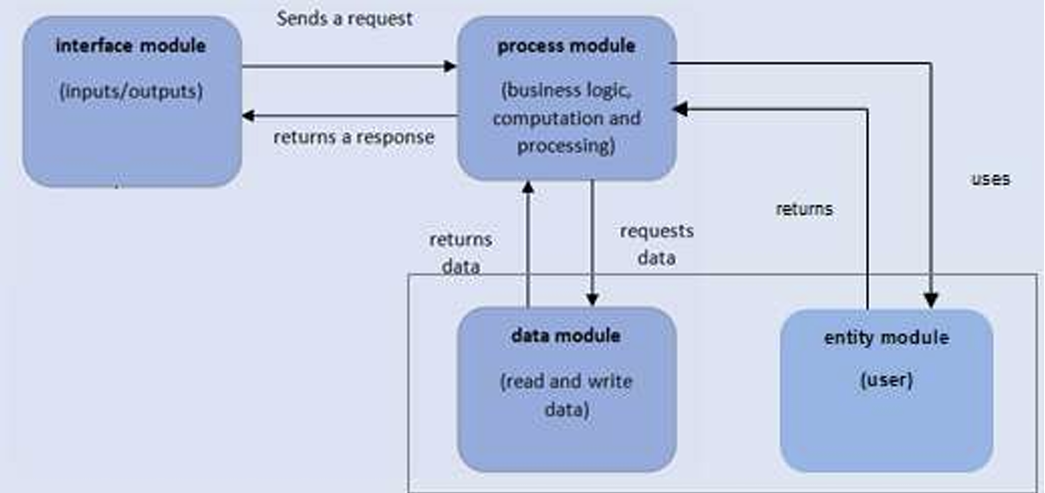
Modularity − Relating to separation of concerns
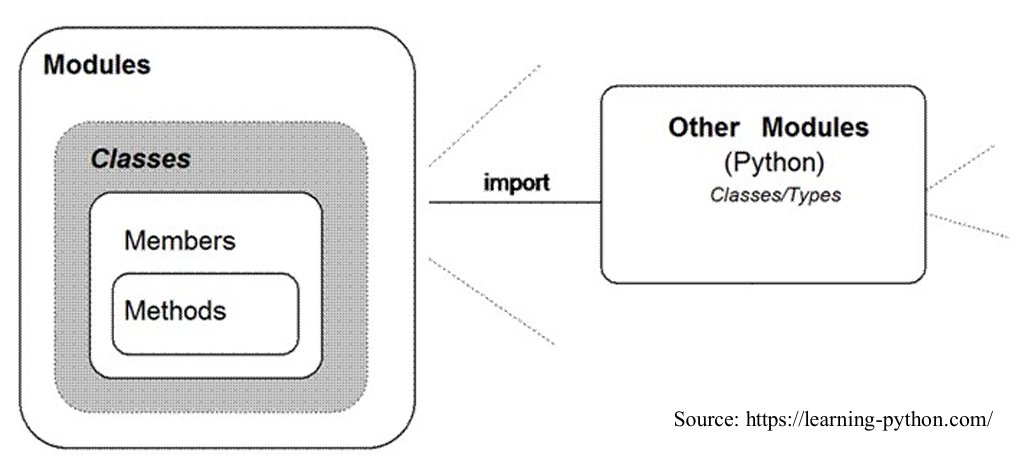
− separating software into components/modules, according to functionality and responsibility
− ignore details of other modules when dealing with a module
− cohesion and coupling
module understandable as a meaningful unit and components of a module are closely related to one another
modules have interactions with others
1.4.1 Cohesion
Each module should be highly cohesive: module understandable as a meaningful unit; components of a module are closely related to one another. (module内部紧密联系)
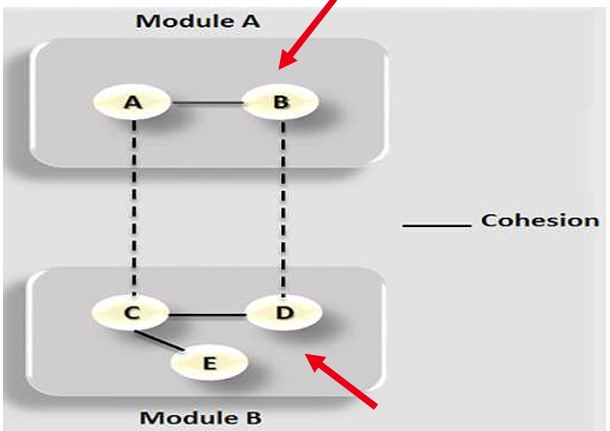
- Operation cohesion: the degree of an operation achieves a single functional requirement.
Chinese:操作实现单一功能要求的程度。
High operation cohesion = good design
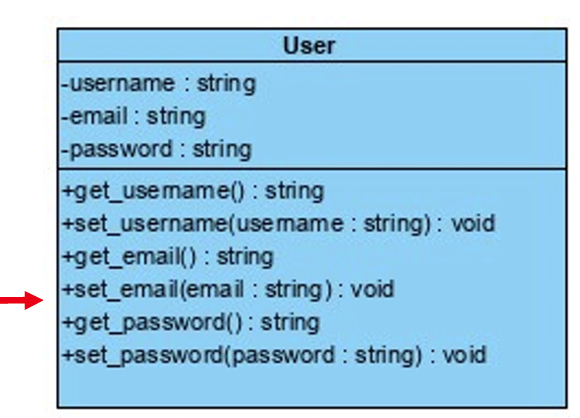
- Class cohesion: the degree of a class achieves a single requirement.
类实现单一功能的程度。
A class should only have attributes and operations related to its objects(属性和操作要紧密与对象联系)
Data classes should just handle data.
High class cohesion = good design
Example:
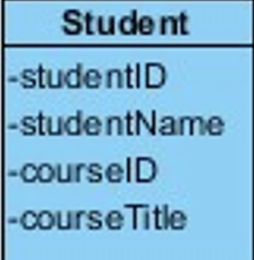
这是一个好的软件设计吗?不是。course不是直属与student的属性。(Student class should only have attributes and operations related to its objects )
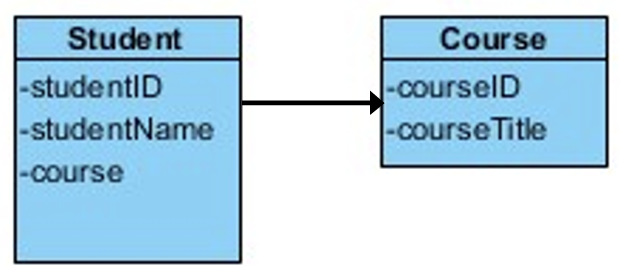
这样才是一个好的软件设计。
- Specialisation cohesion: semantic cohesion of inheritance hierarchies. Super-class and its subclasses should be closely related.
超类和子类要密切关联。
High specialisation cohesion = good design
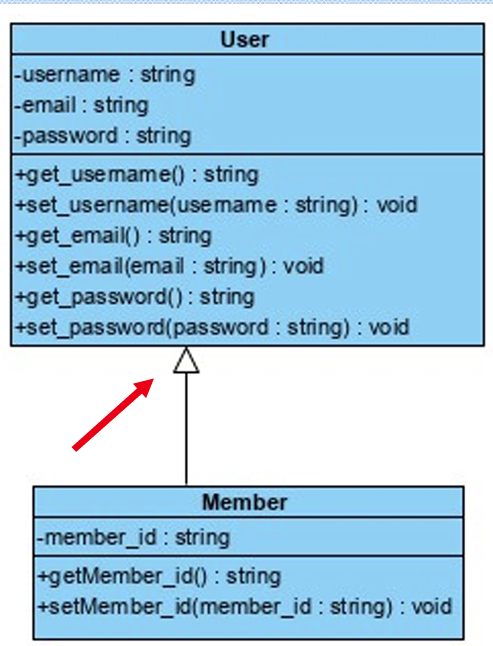
下面这是一个好的软件设计吗?
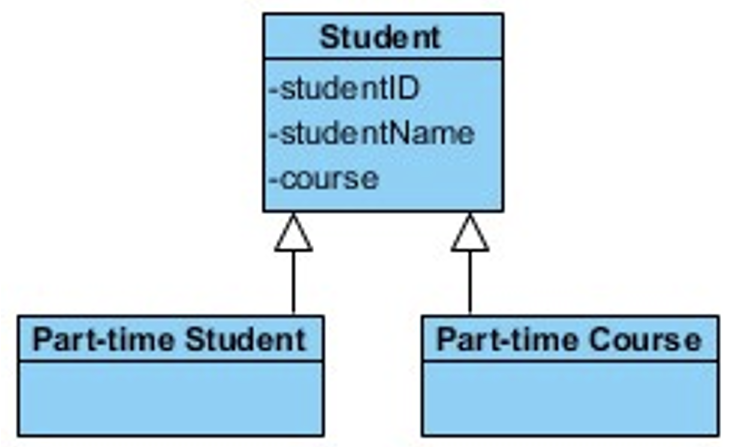
不是。Part-time Course与student联系不紧密。(Part time Course is not a type of Student.)
1.4.2 Coupling
Coupling: degree of interaction between objects
− Interaction coupling
– the number of message types an object sends to other objects and number of parameters passed with the messages
/一个对象发送给其他对象的信息类型数量,以及与信息一起传递的参数数量/
Low Interaction coupling = good design
- 直观例子:
A Student object can interact and send message to a Course object (e.g. the Course object reference, course, is placed in the attribute of the Student class), which means a Student object can call on the methods of a Course object
student 中出现了course 这就是耦合。
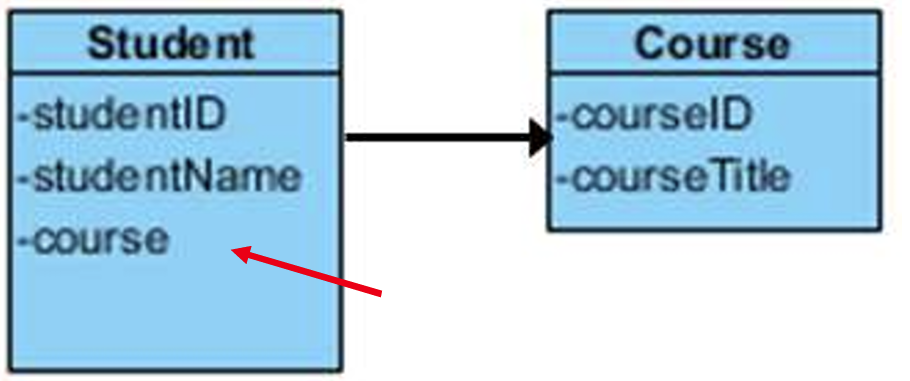
- 图示:
- Modules should exhibit low coupling: modules have low interactions with others.(就是模块间的耦合度要小)
- Strong Coupling or High Coupling (except class inheritance) should be avoided.
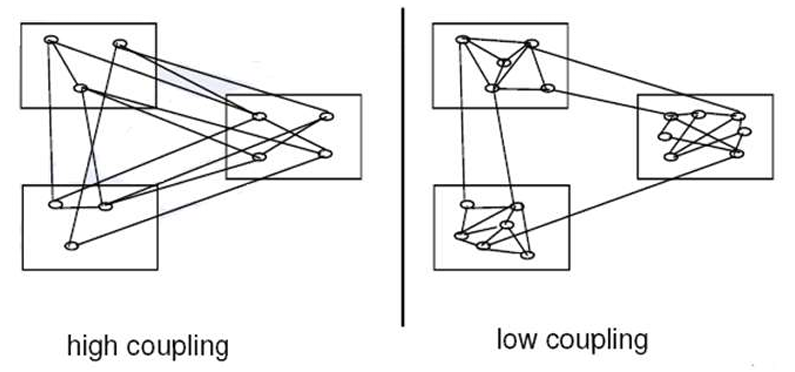
- Inheritance Coupling :
the features from a subclass inherited from its super class
High inheritance coupling (i.e. Subclass inherits more its super class features) = good design
Exercise:
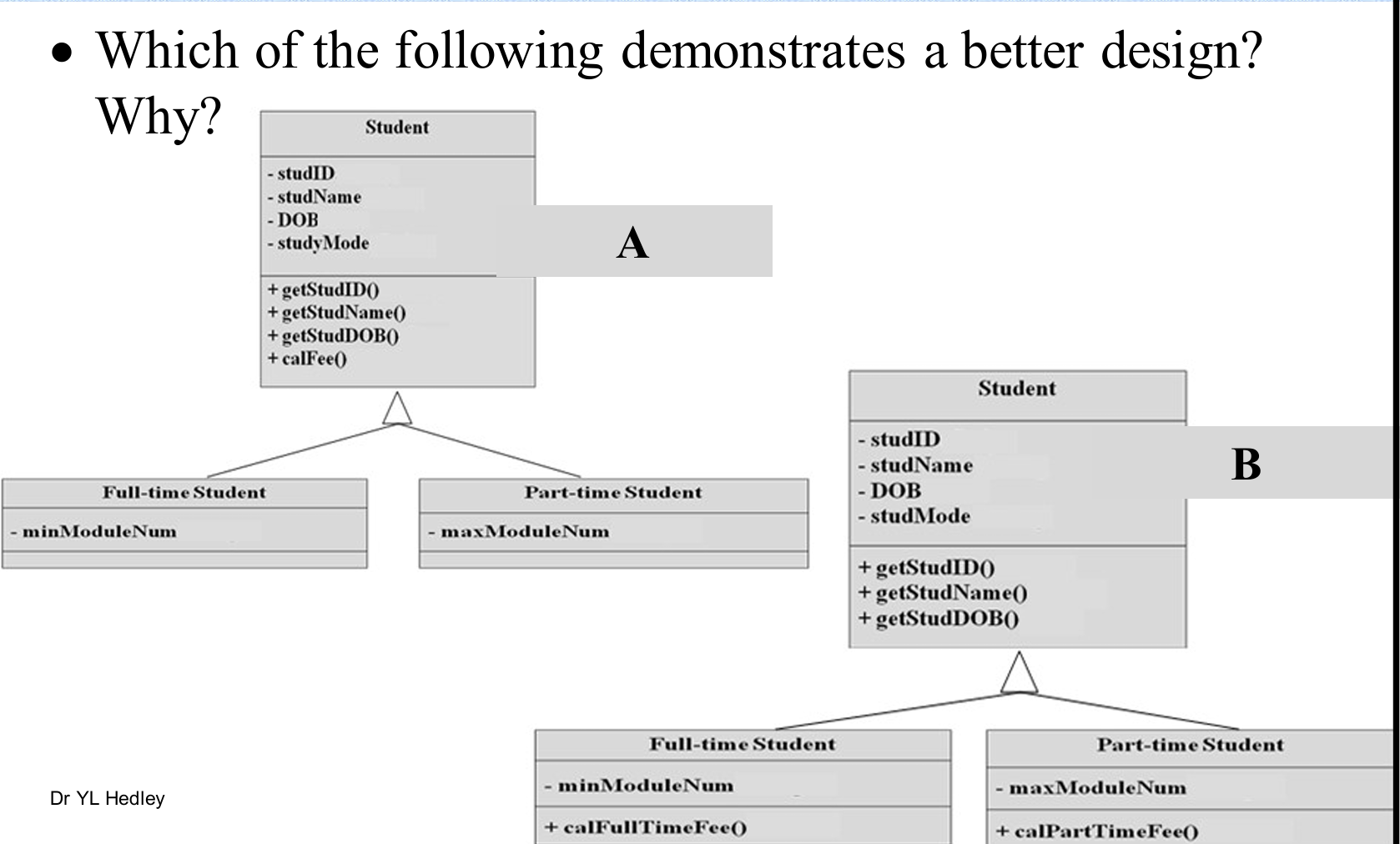
A. 因为子类继承了更多父类的feature。
1.5 Reusability
1.5.1 Aggregation and composition
encapsulates a group of classes collectively for a reuse subassembly, as a complex whole is made of similar components (parts); more parts can be added to the whole component.
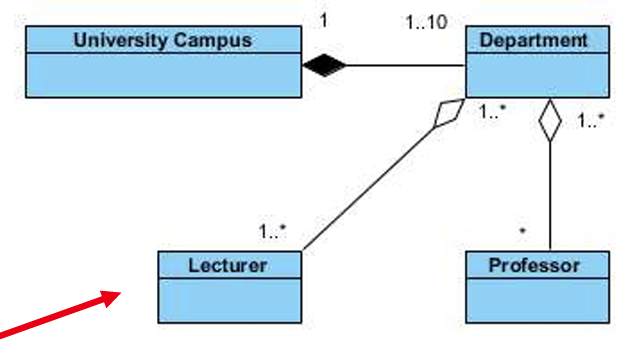
这里就是说模块和模块之间Aggregation和composition的关系。
1.5.2 Generalisation/Specialisation (Inheritance)
allows the creation of new specialised classes when needed, as new specialised subclasses will inherit the characteristics of existing superclasses; e.g. class, MSc Student, can be added to the hierarchy
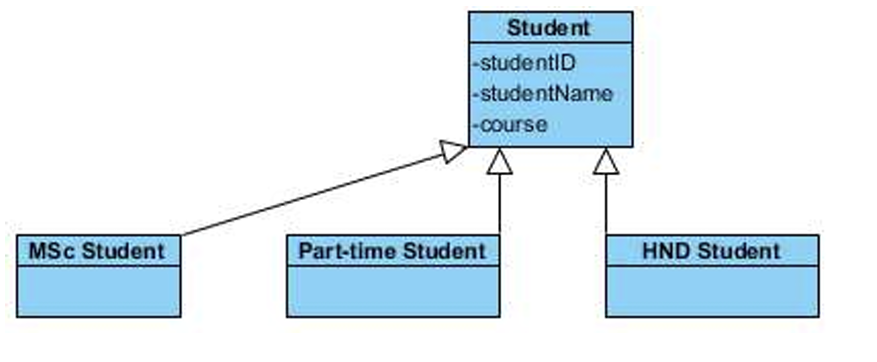
1.5.3 Example
A buyer, seller or an agent in an estate agent appointment booking system.

Question: Is the following via inheritance a good design?
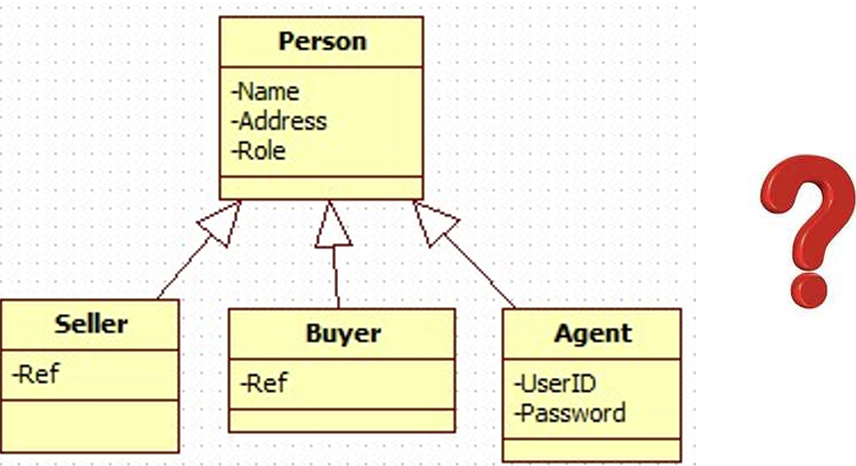
不是。
WHY?
- Criterion for inheritance 1: when a subclass expresses "is a special kind/type of" and not "is a role played by a”
而seller,buyer,agent is a role played by a person.
- Criterion for inheritance 2: An instance of a subclass never needs to become an object of another class:
而这个例子中,一个person可以从seller变成buyer在变成agent,所以这里最好是用Aggregation&Composition关系。
当然,我们也可以这样表示这个模型:
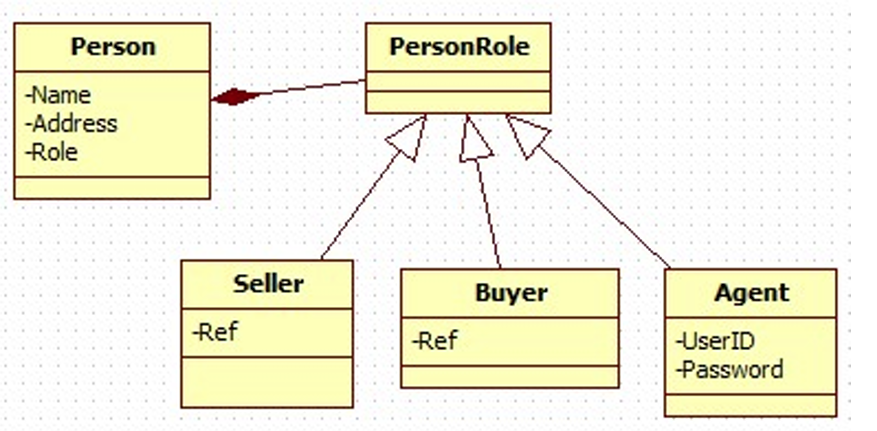
2. Design principle
2.1 Open-Closed
summary: Software entities should be open for extension, whilst keeping closed for modification.
- Open For Extension -The behaviour of the module can be extended to meet new requirements.
- Closed For Modification –change to the source code of the module should be kept to a minimum.
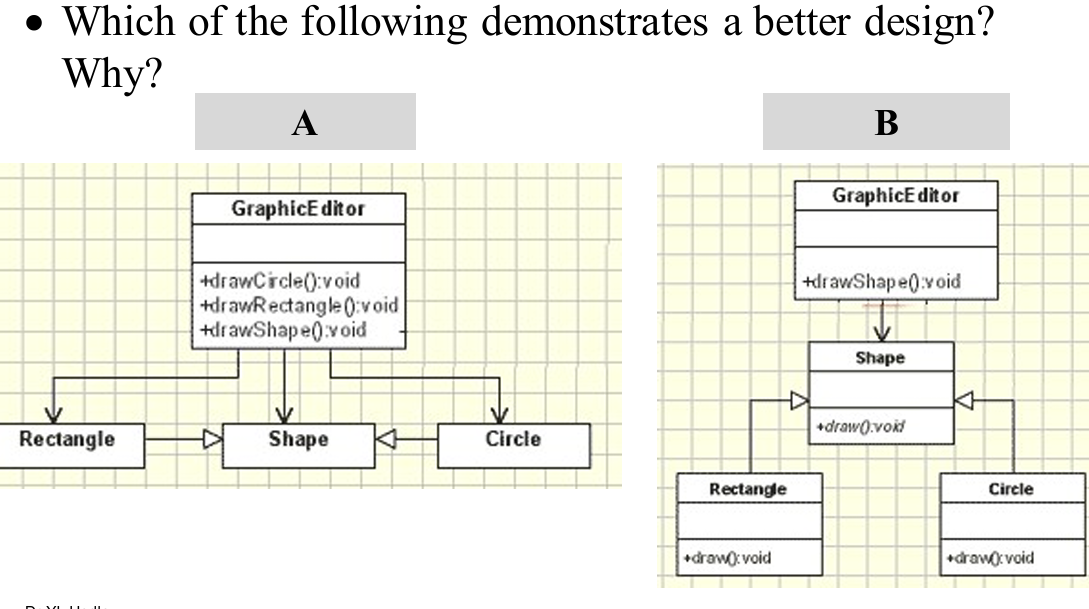
3. Design pattern
上下文−a general reusable solution to a commonly occurring problem within a given context in software design
Context helps the understanding the environment of a problem and reaching an appropriate solution
设计模版,解决相似问题−is not a finished design to be transformed directly into code, rather a description or template for how to solve a problem that can be used in many different situations.
A good design pattern captures design knowledge to be reusedin different settings
Categories:
Architectural Patterns: presenting a fundamental structural schema for a software system −e.g. “MVC” patterns
Design Patterns: providing a scheme for refining the subsystems or components of a software system
General Patterns giving fundamental approaches for assigning responsibilities to objects; basic well-known design guidelines
e.g. the “GRASP” set of patterns
- Design Patterns for more specific but common contexts/problems.
e.g. the “Observer”
Usually specific enough to include a UML model of the outline solution.
类别:
-体系结构模式:为软件系统提供基本的结构模式,例如“MVC”模式
-设计模式:提供细化软件系统的子系统或组件的方案
−通用模式,给出了将责任分配给对象的基本方法;众所周知的基本设计准则
例如“GRASP”模式集。−针对更具体但常见的上下文/问题的设计模式。
例如“观察员” 通常足够具体,以包括大纲解决方案的UML模型。
3.1 GRASP
General, Responsibility, Assignment, Software, Patterns

3.1.1 Controller
Problem: Who should be responsible for handling a system event or business logic?
− System event examples: an external input event, e.g., a cashier scans an item to register a sale or ‘performing a sell check’, when pressing the spell check button in a word processor
Solution: Assign responsibility for handling a system event message to a class
专门处理逻辑操作的模块。图示如下:
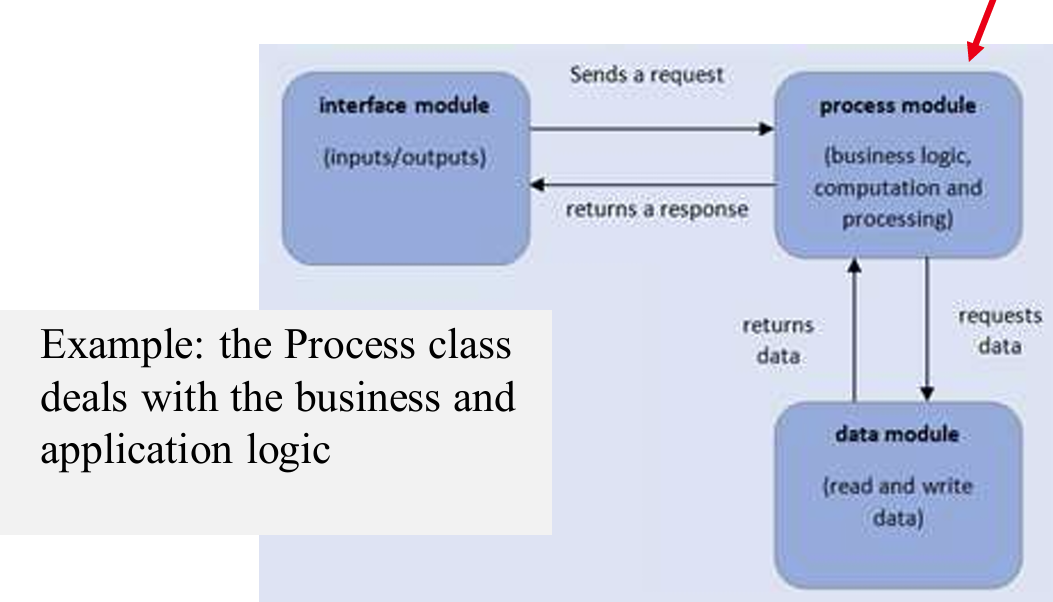
3.1.2 Polymorphism 多态性
- Problem: How to handle alternative behaviour that depends on type? How to create pluggable software components?
- Solution: Assign responsibility for the alternative behaviour – using polymorphic operations – to the types for which the behaviour varies.
继承?子类和父类
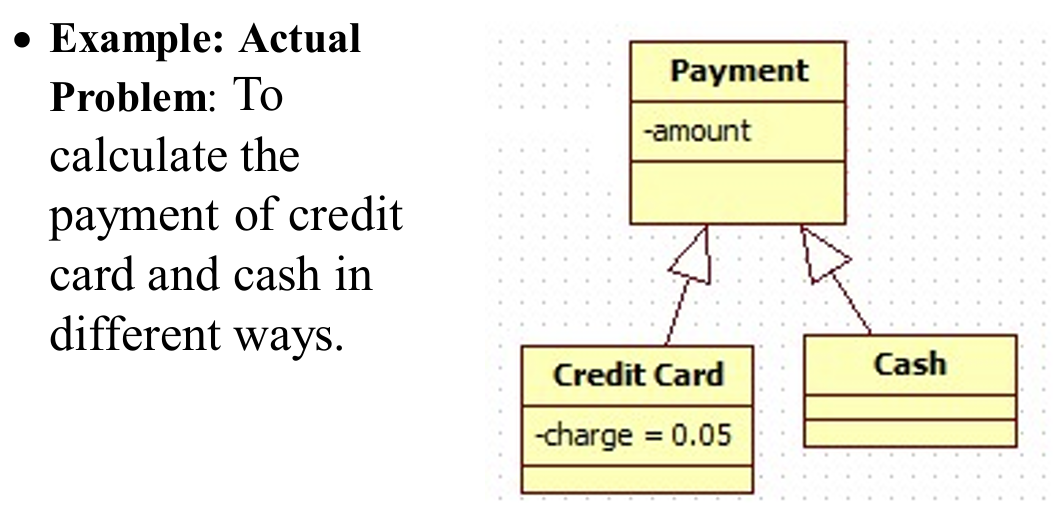
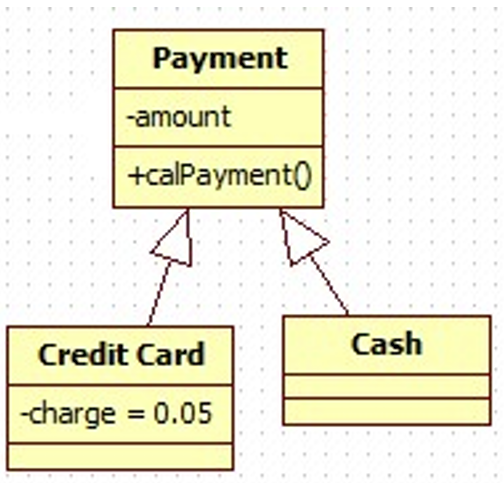
Actual Solution: Make each type a subclass of Payment. Payment will have an operation “calPayment”.
– In subclass Credit Card, to override/redefine the above inherited operation to define how it is calculated for credit card payment (这里是Credit Card覆盖了父类的方法,创建了自己独特的方法。)
– In Cash to reflect how it is done for cash payment. So, there is no need to check what type of Payment it is every time.
– if an Credit Card object is called, then the ‘calPayment’ method will be executed with a 5% charge
– if an Cash object is called, then the ‘calPayment’ method will be executed without any charge
3.2 GoF Patterns
‘Gang of Four’ (GOF, Erich Gamma, Richard Helm, Ralph Johnson, and John Vlissides) analysed 23 Design patterns which provide solutions to general problems faced during software development as follows:
− Creational patterns - manage the creation of objects
− Structural patterns - describe how objects are connected together to form more complex objects
− Behavioural patterns - describe how code is organized, to assign responsibility or roles to certain classes, and to specify the way objects communicate with each other
